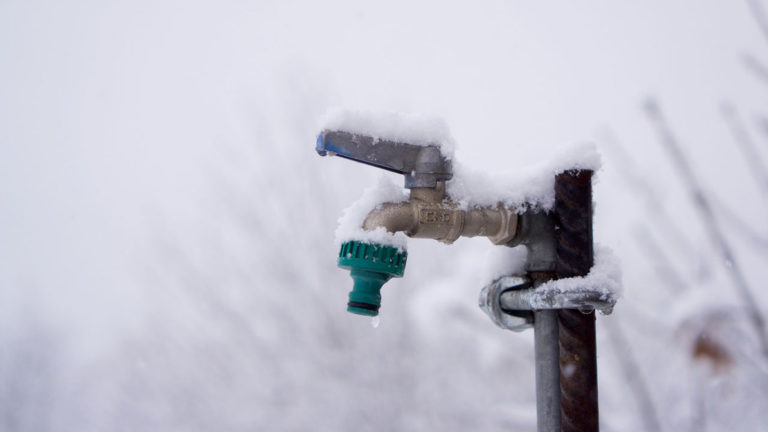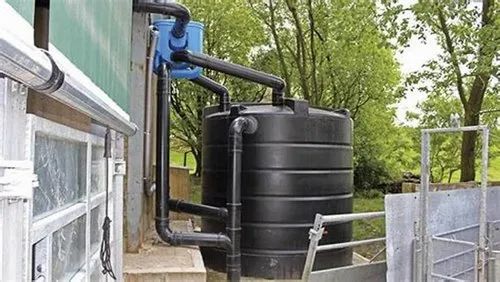When it comes to sustainable living on an off-grid homestead, water is one of the most essential resources you’ll need to manage.
While both greywater and rainwater can be used for irrigation and other non-potable purposes, there are key differences between these two types of water that can impact your decision about which one is best for your homestead.
By understanding the benefits and drawbacks of each option, you’ll be able to make an informed choice that aligns with your specific needs and goals.
We’ll explore the ins and outs of greywater vs.
Rainwater, so you can determine which one is right for your off-grid homestead.
Source of Water
Greywater is generated from household activities such as showering, washing machines, and sinks, while rainwater is collected from roofs and gutters.
Greywater is generated from household activities such as showering, washing machines, and sinks, while rainwater is collected from roofs and gutters.
Both sources can be harnessed and reused for irrigation, flushing toilets, and other non-potable uses.
Greywater, which is wastewater generated from household activities, can be treated and reused for irrigation, toilet flushing, and other non-potable purposes.
This can help reduce the amount of potable water used in the home, thereby reducing water bills and the strain on municipal water supplies.
Rainwater, on the other hand, can be collected and stored in tanks or cisterns for later use.
By using rainwater for irrigation and other non-potable purposes, homeowners can reduce their reliance on municipal water supplies and decrease their water bills.
In addition to these two sources, other sources of water for a sustainable home can include wastewater from clothes washers and dishwashers, as well as water from the floor drain.
By harnessing and reusing these sources of water, homeowners can significantly reduce their water consumption and lower their environmental footprint.
It is important to note, however, that the collection and treatment of greywater and rainwater must be done in a way that is safe and sanitary, and that meets local building codes and regulations.
Quality of Water
Rainwater is generally of higher quality than greywater, as it is free from contaminants such as dirt, bacteria, and chemicals that are present in greywater.
Rainwater is typically of higher quality than greywater due to its natural filtration process.
As rain falls on the ground, it passes through soil and underlying layers of rock, naturally filtering out impurities such as dirt, bacteria, and chemicals.
This process not only removes contaminants but also aerates the water, making it cleaner and fresher.
In contrast, greywater is derived from human activities such as showering, washing dishes, and flushing toilets, which can introduce a range of contaminants into the water.
These contaminants include soaps, detergents, food residues, and human waste, all of which can be present in greywater to varying degrees.
As a result, rainwater is generally of higher quality than greywater, and is often preferred for use in gardens, flushing toilets, and other applications where a clean and contaminant-free water source is essential.
Quantity of Water
Greywater is abundant in households, as it is generated continuously, while rainwater is seasonal and variable.
One of the key benefits of greywater harvesting is the sheer volume of water that is available.
Unlike rainwater, which is seasonal and variable, greywater is abundant in households and can be collected continuously throughout the year.
According to the United States Environmental Protection Agency (EPA), the average American household generates over 100 gallons of greywater per day, including water from sinks, showers, and washing machines.
This volume of water can be used for a wide range of non-potable purposes, such as irrigating gardens, flushing toilets, and washing cars.
In contrast, rainwater harvesting systems can only collect water during rainfall events, and the amount of water collected is highly variable depending on the intensity and duration of the storm.
While rainwater harvesting can still provide a significant amount of water for non-potable uses, greywater harvesting is generally more reliable and consistent in terms of water availability.
Therefore, if you are looking for a reliable source of non-potable water for your household, greywater harvesting may be a better option than rainwater harvesting.
Collection and Storage
Greywater collection and storage systems are simpler and less expensive than rainwater systems, as they can be connected to existing plumbing and do not require large storage tanks.
Greywater collection and storage systems are a practical and cost-effective solution for harvesting and utilizing this valuable resource.
Unlike rainwater systems, which require large storage tanks and more complex plumbing infrastructure, greywater systems can be easily integrated into existing plumbing systems, making them less expensive and more accessible to homeowners and businesses alike.
By collecting and storing greywater, you can significantly reduce your water consumption and reliance on municipal water supplies, while also mitigating the amount of wastewater that needs to be treated and disposed of.
Greywater systems can be designed to be highly efficient and sustainable, using innovative technologies such as drip irrigation and greywater recycling modules to maximize water savings and minimize waste.
Overall, investing in a greywater collection and storage system can provide significant long-term benefits, from reduced water bills to improved environmental sustainability.
Use in Gardening
Both greywater and rainwater can be used for irrigation, but greywater may be more suitable for vegetable gardens and other plants that do not require high-quality water, while rainwater may be better for plants that prefer purer water, such as fruit trees and berry bushes.
When it comes to irrigating your garden, both greywater and rainwater can be valuable resources.
However, the specific needs of your plants will determine which type of water is best suited for them.
Greywater, which is the wastewater generated from sinks, showers, and washing machines, can be more suitable for vegetable gardens and other plants that don’t require high-quality water.
This is because greywater contains nutrients and organic matter that can benefit these plants, while also providing a consistent supply of water.
On the other hand, rainwater, which is collected from rooftops and other surfaces, is often considered a better option for plants that prefer purer water, such as fruit trees and berry bushes.
This is because rainwater is free from contaminants and contains fewer solids than greywater, making it a better choice for plants that are more sensitive to water quality.
By using the appropriate type of water for each plant, you can ensure that your garden is healthy and thriving.
Nutrient Content
Greywater contains nutrients such as nitrogen and phosphorus, which can benefit plants, while rainwater is nutrient-poor.
Greywater, which is the wastewater generated from sinks, showers, and washing machines, contains a wealth of nutrients that can benefit plants.
Nitrogen and phosphorus are two of the most abundant nutrients found in greywater, and they play a important role in plant growth and development.
Nitrogen helps to promote leaf growth and stem elongation, while phosphorus supports root growth and flower and fruit production.
In contrast, rainwater is nutrient-poor, containing only trace amounts of nitrogen and phosphorus.
By harnessing and utilizing the nutrient-rich greywater, gardeners and farmers can create a more sustainable and productive growing environment for their crops.
This can be achieved through the use of greywater irrigation systems, which can be easily installed and maintained.
With the right management and application, greywater can serve as a valuable resource for fertilizing plants, leading to healthier and more robust crop yields.
Soil Absorption Rate
The absorption rate of greywater in soil may be slower than that of rainwater due to its higher salt content, which can affect plant growth and soil health if not properly managed.
The absorption rate of greywater in soil may be slower than that of rainwater due to its higher salt content.
Greywater, which is the wastewater generated from domestic activities such as showers, sinks, and washing machines, contains higher levels of salt and other contaminants compared to rainwater.
When greywater is applied to soil, it can take longer for the water to be absorbed due to the higher salt content.
This slower absorption rate can lead to a buildup of salts in the soil, which can negatively impact plant growth and soil health.
If the greywater is not properly managed, it can cause soil salinization, which can reduce the soil’s ability to support plant growth.
Salinized soil can lead to reduced crop yields, decreased plant growth, and even plant death.
Moreover, the buildup of salts in the soil can also affect soil health, leading to a decrease in the soil’s porosity and structure, which can further reduce its ability to support plant growth.
Therefore, it is essential to properly manage greywater application to ensure that it is used in a way that does not negatively impact soil health and plant growth.
This can include using appropriate filtration systems and implementing irrigation practices that minimize the amount of greywater applied to the soil.
By taking these precautions, it is possible to maximize the benefits of greywater while minimizing its potential negative impacts on soil and plant health.
Regulations and Permits
Greywater systems may be subject to less stringent regulations and permitting requirements than rainwater systems, as they are considered a low-risk source of water. However, it is essential to check local regulations before implementing any water collection and use system.
In contrast to rainwater systems, which are considered a high-risk source of water, greywater systems may be subject to less stringent regulations and permitting requirements due to their low-risk nature.
However, it is important to verify local regulations before installing any type of water collection and use system.
This is because regulations regarding greywater systems vary by state and even by county or city, so it is essential to understand the specific requirements for your area.
For instance, some states or localities may prohibit the use of greywater for irrigation, or may require special treatment or storage systems to ensure the water is safe for use.
Some states or localities may require permits for the installation of greywater systems, while others may not.
Therefore, before investing in a greywater system, it is important to research local regulations and obtain any necessary permits to ensure that your system is compliant and safe for use.
Want More? Dive Deeper Here!
Hey there! If you’re the type who loves going down the rabbit hole of information (like we do), you’re in the right spot. We’ve pulled together some cool reads and resources that dive a bit deeper into the stuff we chat about on our site. Whether you’re just killing time or super into the topic, these picks might just be what you’re looking for. Happy reading!






